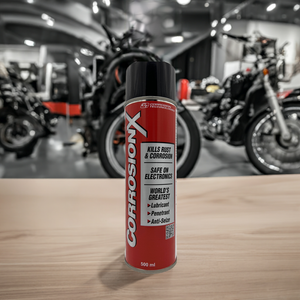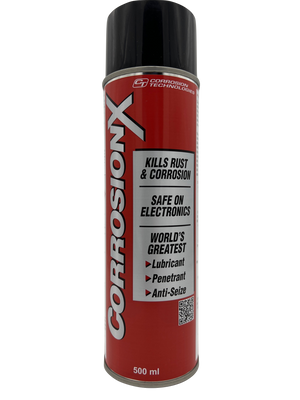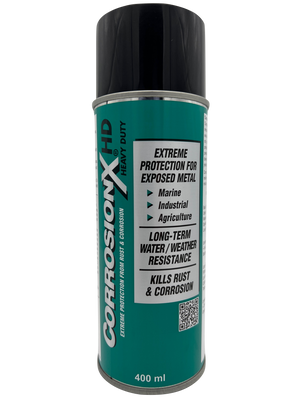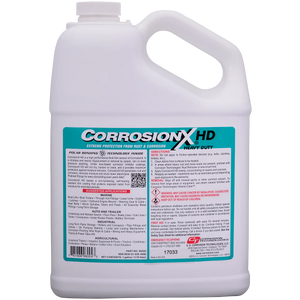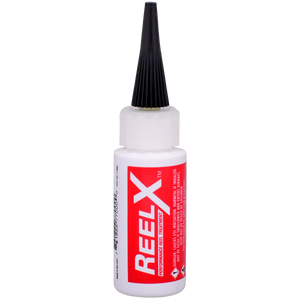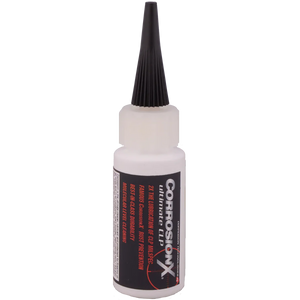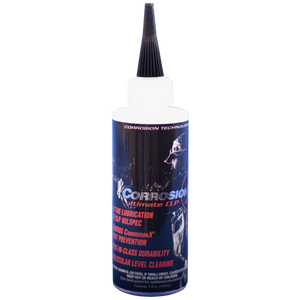If you’ve ever felt the excitement of heading out at the crack of dawn for a day of hunting, or the rush of carefully lining up that perfect shot at the range, you already know how satisfying it is to use a well-maintained shotgun. Imagine feeling the solid, reliable action every time you rack the pump or break open the barrel—there’s nothing quite like that smooth, confident click that tells you everything is in prime condition. Yet, as with any treasured piece of equipment, shotguns demand regular, thoughtful care.
Shotguns aren’t your average firearms. They’re designed for a broad spectrum of uses: from hunting waterfowl in soggy marshlands to taking down clay pigeons in a sunlit sporting clay course. All of these conditions expose the shotgun to moisture, dirt, grime, and general wear and tear. That means if you neglect consistent cleaning and lubrication, your beloved shotgun might start showing signs of rust, a stiff action, or even misfires. No one wants to watch their prized firearm lose its luster—or its reliability—simply because of overlooked care.
So, how do you keep your shotgun in tip-top shape while extending its lifespan? The short and sweet answer is regular maintenance with high-quality gun oil. With the right product and a bit of know-how, you can protect your shotgun’s moving parts, stave off corrosion, and keep that satisfying performance intact for years to come.
In this guide, we’ll take a deep dive into the nitty-gritty of shotgun maintenance. We’ll explore the unique anatomy of these firearms, discuss the importance of proper lubrication, and show you why a specific product—CorrosionX for Guns—can offer just what you need to stand up against wear, tear, and those pesky elements. By the time you finish reading, you’ll be armed with all the knowledge to give your shotgun the VIP treatment it deserves.
The Unique Traits of Shotguns – What Sets Them Apart
Before we get lost in the details of oils, rust prevention, and cleaning methods, let’s look at what makes shotguns so special in the first place. Why can’t you simply treat them like you would a basic rifle or pistol? After all, a firearm is a firearm, right? Well, not exactly. Shotguns have structural differences, a variety of use cases, and some heavy-duty components that make them one-of-a-kind. Understanding these distinctions is crucial because the better you know your firearm, the better you can care for it.
How Shotgun Barrels and Ammunition Are Different
One of the most obvious differences between shotguns and other firearms is the barrel. Instead of a single projectile, a typical shotgun shell unleashes multiple small pellets—often called shot—that spread out once they exit the muzzle. Think of it as a tightly choreographed dance of hundreds of tiny dancers dispersing out of the barrel to hit targets at short range. This spread is precisely why shotguns are so effective for shooting birds on the wing or clays being launched from various angles. The geometry of the barrel, including any choke system, helps control how tightly those pellets stay together before they disperse.
Because of the unique shells involved, shotguns have to handle a type of ammunition that leaves more residue—especially when considering plastic wads and the residue from lead or steel shot. All those byproducts can accumulate inside the barrel and action if you don’t clean your gun regularly. That buildup can impact accuracy, cause uneven pellet patterns, or, in the worst scenarios, lead to barrel obstructions.
The Variety of Shotgun Actions and Mechanics
Shotguns come in different actions—pump-action, semi-automatic, break-open (like side-by-sides or over-unders), and even lever-action in some rarer cases. Each design has its quirks. For instance, a pump-action shotgun relies on your manual action to eject and load the next shell, which means there are more mechanical parts interacting each time you cycle the pump. A semi-auto, on the other hand, uses gas or inertia to do the cycling work for you, which introduces different stress points in the firearm.
Whichever type of shotgun you own, lubrication is your best friend. The friction happening each time parts slide against each other can quickly lead to metal wear. Without a proper oil to keep things slick, you might notice rough cycling, unusual squeaks, or even a jam at the worst possible moment—like when you finally get that perfect shot lined up.
Why Maintenance Matters – And the Pitfalls of Neglect
If we’re honest, it can be easy to slip into a cycle where you only give your shotgun a quick wipe-down after a day in the field or at the range. Perhaps you aim to give it a thorough cleaning “tomorrow,” but that tomorrow never comes. Or maybe you assume that because shotguns are known for their rugged design, they don’t really need constant attention. That assumption, however, can lead down a road of dull performance and even permanent damage. Let’s explore why consistent maintenance is so crucial.
Corrosion: The Enemy You Can’t Ignore
Corrosion is, without a doubt, a firearm’s worst enemy. Whether you’re hunting waterfowl in a misty marsh or on a multi-day camping trip where dew and humidity seep into every nook and cranny, moisture doesn’t discriminate. It can—and will—find its way into even the smallest metal crevice of your shotgun. Over time, unchecked moisture leads to rust, which can weaken parts or cause them to seize up.
If you’ve ever seen that telltale reddish-brown crust on metal, you probably know how heart-wrenching it is to watch something as prized as a shotgun slowly deteriorate. Regularly applying a protective gun oil is like giving your shotgun a metaphorical shield, ensuring that moisture beads off rather than clings on.
Wear and Tear on Moving Parts
Despite having fewer moving parts than some firearms, shotguns still experience a considerable amount of wear. Parts like the locking lug, the bolt, and the trigger assembly rub against each other every time you load and fire. Imagine if you were to drive your car without oil—how long would that engine last before it started to grind to a halt? The same concept applies to your shotgun: no lubrication means more friction, more friction means faster wear, and faster wear means a reduced operational lifespan.
Reliability in Critical Moments
Shotguns aren’t just for leisure. Some people rely on them for home defense. Others count on them to function flawlessly during competition or a crucial hunting season. When your heart is pounding, a malfunction is the last thing you want to deal with. Whether you’re shouldering your firearm at a sporting clay range or relying on it to keep you safe in uncertain situations, a well-lubricated, well-maintained shotgun drastically lowers the chance of unexpected failures.
Enter Gun Oil – Your Shotgun’s Secret Weapon
Now that we’ve established just how unique and valuable shotguns are, let’s talk about the real hero of this story: gun oil. Think of gun oil as the lifeblood of your firearm, ensuring every moving part interacts flawlessly. A good oil doesn’t just lubricate; it also protects against corrosion, helps prevent fouling from building up, and can significantly extend the longevity of your shotgun.
But let’s dig deeper—why is something as simple as oil so important, and how does it fulfill all these roles?
A Barrier Against Moisture
Moisture is inevitable. From the sweat on your hands during a hot summer day to the drizzle that soaks your gear during a fall hunt, water is always lurking around your shotgun. Good gun oil forms a thin layer on the metal surfaces, preventing water from clinging on and seeping into small crevices. This barrier isn’t just superficial; a quality product will penetrate even microscopic pores in the metal, offering a line of defense from within.
When you think about it, this process is almost like applying a layer of wax to your car. That wax doesn’t just make your car shiny; it repels rainwater, preventing rust on the vehicle’s body. By investing in a top-notch gun oil, you’re ensuring your shotgun has that same style of protective coat each time you take it out or store it away.
Lubrication to Reduce Friction
Friction is a basic mechanical force. When two metal surfaces rub together without lubrication, they generate heat and gradually wear each other down. Imagine rubbing your palms together rapidly—you can feel that warmth building up. Over time, that friction can create shallow grooves or scratches, degrading the part’s structural integrity.
A proper gun oil steps in to smooth things out. Instead of metal on metal, you have metal on oil on metal, which drastically cuts down the friction. This is crucial for maintaining crisp trigger pulls, ensuring the bolt slides effortlessly, and preserving the mechanics of any pivot points in the shotgun’s action.
Protection from Powder Residue and Fouling
Every time you pull the trigger, the primer ignites the propellant in the shell, creating a sudden burst of hot gases that propel the shot out of the barrel. This reaction also leaves behind residue—unburnt powder, carbon, and sometimes plastic fouling from wads. When left unchecked, these residues accumulate on the metal surfaces, eventually leading to reliability issues or pitting in the steel.
An effective gun oil can help neutralize and remove these deposits. It keeps residues from baking onto critical surfaces, making your cleaning process easier and more efficient. Rather than spending hours scrubbing stubborn carbon fouling, a good oil will let you wipe away the debris with minimal effort.
Why CorrosionX for Guns Stands Out
With countless gun oils on the market, how do you decide which one is worth your time? Many have similar claims—protection against rust, improved lubrication, no residue build-up, and so on. But sometimes the true test is in the field, where the weather is unforgiving, the hunts are long, and the demands on your firearm are high. CorrosionX for Guns has carved out a reputation for excelling in these real-world conditions, and there are some specific reasons for that.
Superior Penetration into Metal Surfaces
Not all oils are created equal. Some products stay on the surface, which is decent for immediate lubrication but might fail to protect the deeper nooks and crannies. CorrosionX for Guns has a knack for working its way into the microscopic pores of the metal. This deep penetration isn’t just marketing fluff; it’s how the product actively pushes out moisture and wards off corrosion.
Long-Lasting Formula That Won’t Evaporate Easily
Imagine you carefully oil your shotgun before storing it in your gun safe, only to find out a week later that the oil has mostly dried up. That defeats the point of preemptive maintenance. CorrosionX for Guns is designed to stick around. It doesn’t simply evaporate under normal conditions, nor does it gunk up into a thick, tacky residue over time. This stability means you can go longer between applications.
Performance Under Extreme Conditions
Whether you’re braving a cold, wet morning in the duck blind or sweating through a scorching afternoon in the desert, you want an oil that can handle the ups and downs of temperature and humidity. CorrosionX for Guns holds its own across a wide range of climates. It remains viscous enough to provide lubrication even when the mercury drops and doesn’t break down excessively in high heat.
Versatility for All Types of Firearms
While we’re focusing on shotguns here, it’s worth noting that CorrosionX for Guns plays well with rifles and pistols too. This versatility is particularly beneficial if you own multiple firearms, each with its own maintenance schedule. Instead of juggling different oils for different guns, you can rely on one proven solution across the board.
Applying CorrosionX for Guns – A Practical Guide for Shotgun Owners
At this point, you might be nodding along, thinking, “Alright, I’m convinced. Let’s do this!” But how exactly do you apply CorrosionX for Guns in a way that ensures you’re getting maximum protection for your shotgun? Don’t worry; we’ll walk you through a simple, step-by-step routine. And remember, consistency is the name of the game—regular cleaning and oiling will keep your shotgun at the top of its class.
Step 1 – Thorough Cleaning Before Oiling
The first step is always to remove any existing debris or fouling. Unload your shotgun and double-check there’s no live ammunition around. Safety first! Next, disassemble it according to the manufacturer’s recommendations. For many break-open designs, this is straightforward—remove the fore-end, separate the barrel from the receiver, and you’re good to go. For pump or semi-auto shotguns, you might need to remove the barrel, bolt, and other accessible components carefully.
Use a suitable solvent or a specialized gun cleaning solution to wipe away powder residue, old lubricants, and grime. You can use a bore snake or cleaning rod with patches for the barrel, ensuring you run enough passes to get rid of carbon buildup. This step is crucial; you want a pristine slate so the new oil can bond effectively.
Step 2 – Applying the Oil
Once everything is clean and dry, it’s time for the main event: applying CorrosionX for Guns. Put a small amount of oil on a clean cloth or directly on the metal surfaces. Remember, a little can go a long way. Gently spread the oil across the barrel, the receiver, and any moving parts—like the bolt and any contact points in the trigger assembly.
Aim for a thin, even layer rather than soaking the metal. You don’t want oil pooling in corners or dripping out of the action. If you see areas that look overly saturated, don’t worry; you can remove the excess in the next step. The goal is to create a uniform film that coats the metal surfaces thoroughly.
Step 3 – Wiping Off Excess
After you’ve applied the oil, let it sit for a brief moment—this gives it time to work into any microscopic crevices. Then, grab another clean cloth or a paper towel and lightly wipe away any visible excess. Excess oil can attract dust and debris, which is counterproductive to keeping your shotgun in prime condition.
When you’re done, you should see a soft sheen on the metal without obvious wet spots. If you prefer a slightly heavier coat for long-term storage—say, if you won’t be shooting for months—just remember to remove that extra layer before your next outing. Heavy lubrication can sometimes drip into areas you don’t want it, or it can become a magnet for dirt if you end up shooting sooner than expected.
Hunting, Sport Shooting, and Tough Environments – How CorrosionX Shines
Shotguns live tough lives. They’re frequently tossed in the back of a truck, carried through the underbrush, splashed with water, or subjected to days of continuous firing in competitive events. A one-size-fits-all maintenance approach isn’t going to cut it unless you have a product that’s versatile, reliable, and rugged enough to roll with the punches.
Hunting in Wet and Dirty Conditions
Let’s say you’re waterfowl hunting in marshlands or wading through tall, dew-soaked grass at daybreak. Your shotgun is bound to get wet at some point. But with CorrosionX for Guns, you’re not just hoping moisture will stay away—you’re actively repelling it. The oil forms a barrier so water can’t easily bond to the metal surfaces, reducing the risk of rust forming overnight.
Because the oil remains stable in varying temperatures, it also prevents any water that does make it onto your shotgun from freezing or causing mechanical issues in colder climates. All in all, this means you can focus on that flock of geese overhead rather than worrying about whether your shotgun will misfire.
Sport Shooting and High-Volume Firing
Sport shooting events often require rapid, repeated firing, where your shotgun’s barrel gets hot, and internal components face more stress than during a casual hunt. An inferior oil might start breaking down under extreme heat, but CorrosionX for Guns maintains its lubricating properties, ensuring you can keep firing without performance hiccups.
In activities like skeet, trap, or sporting clays, precision is everything. You rely on a consistent shot spread and a smooth action to cycle shells quickly. CorrosionX aids in this consistency by reducing friction between moving parts, ensuring you’re not fighting against your gun to make that next shot.
Easy Maintenance in the Field
Sometimes, you’re so focused on the hunt or the competition that you don’t have the luxury of a detailed cleaning session. Maybe you’re out for several days without immediate access to a thorough cleaning station. In those situations, a quick wipe-down with a cloth and a few drops of oil can be enough to keep your shotgun operational. CorrosionX for Guns excels here because you don’t need constant reapplication. A little top-up to critical points can sustain you between more comprehensive cleaning sessions.
Common Mistakes to Avoid During Shotgun Maintenance
At this point, you might feel like you’ve become a pro in shotgun care. But it’s always good to remain aware of pitfalls that can trip you up along the way. After all, even the best intentions can lead to mishaps if you aren’t careful. Let’s take a brief moment to highlight some common errors that can undermine all your good work.
Using Too Much Oil
Overzealous application is probably the top rookie mistake. If your firearm looks like it just took a dip in a tub of oil, that’s not a sign of thorough care—it’s a sign you’re overdoing it. Excess oil accumulates dust, debris, and unburned powder, eventually forming a grimy layer. This gunk can cause feeding or ejection problems, defeating the purpose of lubrication.
Failing to Clean Before Lubricating
Merely squirting oil into a dirty barrel or onto dusty mechanical parts doesn’t do much good. You’ll end up sealing in the fouling, which can continue to corrode or scratch the metal underneath that oily layer. Always clean before you lubricate, no exceptions.
Skipping Maintenance After Limited Use
You might think, “I only fired a handful of shells, so my shotgun isn’t really dirty.” It’s a tempting mindset, but even a few shots can leave residue. Plus, external factors like humidity can creep in regardless of how many rounds you fired. Make it a habit to do at least a quick pass with a cleaning cloth and a re-lube after every outing.
Storing in Damp Environments
Even the best oil can only do so much if you store your shotgun in a chronically damp environment. If you live in a humid area, consider using a dehumidifier in your gun safe or storing silica gel packs alongside your firearm. Oil is an excellent barrier, but it’s not magical—it helps, but you still need to do your part by providing a reasonable storage environment.
Finding CorrosionX Products in Finland – A Reliable Source
If you’re located in Finland and thinking, “Where can I get my hands on CorrosionX for Guns?”, you’re in luck. In Finland, CorrosionX products are available from Tallitkuntoon, and you can visit their website at www.tallitkuntoon.fi. Having a local, trustworthy distributor can save you from the hassle of searching for a reputable seller or dealing with international shipping headaches.
Beyond simply stocking the product, Tallitkuntoon can often provide expert advice tailored to Finland’s distinct climate and hunting conditions. Whether you’re dealing with icy winters or damp autumns, connecting with a local supplier ensures you’ll get not only the product you need but also region-specific tips on how to get the most out of CorrosionX for Guns.
Frequently Asked Questions – Clearing Up the Details
By now, you might be brimming with insights and perhaps a few lingering questions. After all, shotgun maintenance is a topic that can get detailed fast. Below are some common queries that might be rattling around in your mind. While these certainly don’t cover every scenario, they’re a solid starting point for ensuring your maintenance routine is on the right track.
How often should I oil my shotgun?
As a general rule, it’s wise to oil your shotgun after every outing, especially if you’ve been in wet or dusty conditions. Even if you fired just a few rounds, a quick wipe-down and re-lube can go a long way. But for those truly minimal uses—say you only took the shotgun out for a day of travel or didn’t end up firing it at all—a lighter approach might suffice. Just make sure to check for any signs of moisture or residue before returning it to storage.
Is CorrosionX for Guns suitable for rifles and pistols too?
Absolutely. While CorrosionX for Guns excels in the larger, often more rugged environment of a shotgun, it’s still perfectly suitable for most firearms, whether they’re rifles, pistols, or even black powder arms. Its protective and lubricating properties carry over seamlessly, making it a versatile option if you have a diversified firearm collection.
Is this oil environmentally safe?
CorrosionX for Guns is designed to be more considerate of environmental impact than many traditional oils. While you should always dispose of cleaning materials responsibly, you can feel more confident that this product avoids many harmful chemicals found in less refined lubricants.
What’s the difference between synthetic and traditional oils?
Traditional oils are typically made from petroleum-based products, which can be effective but sometimes degrade faster or leave behind sticky residues. Synthetic oils, like CorrosionX for Guns, are engineered to be more stable, withstand temperature extremes better, and provide extended protection. In essence, synthetics often give you a leg up on durability and consistency under challenging conditions.
Can too much oil harm my shotgun?
It can. A heavy layer of excess oil can attract debris, dust, and unburnt powder, potentially causing jams or reliability issues. This doesn’t mean you shouldn’t oil your shotgun—just make sure you wipe off the excess to maintain a balanced coat.
Going the Extra Mile – Beyond Basic Lubrication
Now that we’ve covered the core principles of oiling and why CorrosionX for Guns is a standout choice, let’s take a moment to discuss a few extra care tips. Consider these the icing on the cake, small habits that can further lengthen your shotgun’s lifespan and keep it operating at peak performance.
Regular Inspection of Critical Parts
Even the most robust shotgun has parts that are more prone to wear than others—like the ejector, firing pin, or certain springs in semi-auto mechanisms. Make it a habit to periodically check these components for signs of damage or excessive wear. If you catch a worn-out spring early, you can replace it long before it fails in the field.
Proper Storage Conditions
We touched on this earlier, but storage is a huge factor in preventing rust. A dry, climate-controlled environment is ideal. If you live somewhere with high humidity, consider a gun safe with a built-in dehumidifier or keep moisture-absorbing packets in the safe. The combination of good storage and a reliable oil is like sending your shotgun on a well-deserved vacation each time you’re not using it.
Rotate Your Stock of Shells
This might not be directly related to lubrication, but it’s often overlooked. Ammunition can degrade over time, especially if stored in poorly controlled environments. While this affects your shotgun’s performance more than the gun itself, it’s worth keeping fresh shells on hand. After all, a well-oiled shotgun firing old, unreliable ammo doesn’t help much.
Pay Attention to Chokes and Threads
If you’re using interchangeable chokes, remember to remove and clean the choke tubes every so often. Oil the threads lightly before re-installing them. Corrosion can build up in those threads, making it difficult to change chokes down the line.
Conclusion – Elevate Your Shotgun Experience with the Right Maintenance
Your shotgun is more than just a tool; it might be a treasured companion on early-morning hunts, a competitive edge on the sporting clay course, or a critical component of home defense. Whatever role it plays in your life, it deserves a care routine that’s up to the task. By choosing a top-tier gun oil like CorrosionX for Guns, you’re investing in your firearm’s longevity, reliability, and overall performance.
From preventing rust to ensuring smooth cycling and consistent shot patterns, regular lubrication is the key to preserving your shotgun’s integrity. But remember, the oil is only as effective as your willingness to apply it thoughtfully and consistently. Make sure you fully clean your shotgun after each use, apply a thin yet thorough layer of oil, and store it in conditions that promote dryness and cleanliness. These small steps add up to a major payoff: a shotgun that stands the test of time, ready and reliable whenever you need it.
And if you’re reading this in Finland, you have a straightforward solution to get your hands on CorrosionX products by visiting www.tallitkuntoon.fi, where you can find expert guidance and the product you need for superior shotgun maintenance.
So take that next step. Give your shotgun the care it deserves. Whether you’re a weekend warrior heading to the range, a dedicated waterfowl hunter, or a clay-shooting enthusiast, a well-maintained shotgun helps ensure you’ll hit the mark every single time. And let’s be honest—there’s nothing quite like the confidence that comes from a firearm that functions and looks as good as the day you first picked it up.
Happy shooting, and here’s to many more years of dependable, smooth-blasting fun with your favorite shotgun!


